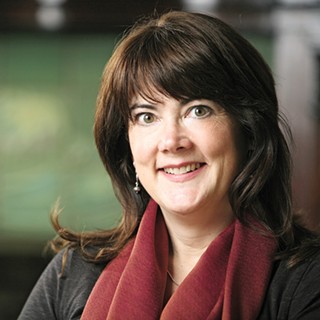Some of Washington state’s operating rooms recently got an upgrade. This upgrade is designed to reduce surgical complications in virtually every setting, from minor outpatient surgeries to the most complex and risky operations, and it is proven to be amazingly effective. Unlike most medical advances, it costs almost nothing and is almost laughably simple.
It’s a checklist.
The airline industry is replete with checklists — a necessity in an industry where a small error can result in catastrophe. Likewise, the construction industry would be lost without elaborate checklists to coordinate the legions of contractors and systems involved in building today’s complex structures. But the medical world has been slow to embrace the concept, according to Atul Gawande, author of The Checklist Manifesto: How to Get Things Right.
Gawande — author, surgeon, Harvard professor, father of three — headed the World Health Organization’s ground-breaking research on checklists, called Safe Surgery Saves Lives. Piloted at eight hospitals around the world — from the University of Washington Medical Center to a hospital in Tanzania — the checklist proved itself in every location. While the rate of complications in the four high-income hospitals was already lower than in the poorer locations, Gawande reports, “Introducing the checklist had produced a one-third decrease in major complications for the patients in those hospitals as well.”
The checklist is designed to be concise, to fit on a single page and to take just minutes to complete. It not only addresses critical steps in the surgical process — Has an antibiotic been given in a timely fashion? Is all the equipment in place? — but also fosters communication among the surgical team.
In a video conference about the WHO study, University of Washington’s Dr. E. Patchen Dellinger explains that his teams had been a little reluctant to take on yet another responsibility in the O.R. But after using it, “A lot of us now feel as if we don’t know why the checklist wasn’t always there and we would be pretty uncomfortable without it,” he says.
In fact, the results of the WHO study, which were published in the January 2009 New England Journal of Medicine, were so convincing that Washington Gov. Chris Gregoire encouraged all of the state’s hospitals to implement surgical checklists within the next 12 months.
“Preventable errors account for 30 percent of all health care costs,” she writes. “Given the current economic crisis, these are not dollars we can afford to waste. The healthcare system can do better, both in preventing needless suffering and reducing costs. Washington state is leading the way in addressing this issue.”
Preventable errors don’t just tax medical resources needed to care for sicker patients. They have another way of driving up healthcare costs — when injured patients, or their families, present their dismay in the form of a lawsuit. In a study published in January 2011, Dutch researchers reviewed data from the Netherlands’ largest medical liability insurer and found that nearly a third of malpractice claims arose from mistakes that could have been caught by a checklist.
So, checklists are virtually cost-free, take minutes to complete, can save lives and money by preventing complications, and potentially reduce lawsuits. So how many Washington hospitals are going along with the governor’s request to use them in every O.R., and for every surgery?
No one knows for sure.
“This initiative is a huge, huge undertaking,” says Rosa Johnson, of the Surgical Clinical Outcomes Assessment Program (SCOAP). SCOAP is led by Washington state physicians and works with hospitals on a voluntary basis to collect and compile data, which is then used to help hospital management see how their organization compares to others in the state. The goal is to create the same type of monitoring and adjustments that the aviation industry uses to prevent mishaps.
Although the governor encourages it, implementing the checklist is voluntary and it can be harder than it seems at first glance, says Johnson.
“In a smaller hospital, it is easier because if the chief of surgery says, ‘We’re going do this,’ and they have three O.R.s, and they do it.” Larger hospitals with many O.R.s may have trouble monitoring to see if the checklist is actually being used and used in a meaningful way.
“What I can tell you,” says Johnson, “is that most of the hospitals have initiated use of the checklist for at least some of their surgeries.”
In Spokane, Providence Urban Medical Centers Chief Nursing Officer Peg Currie says SHMC and Providence Holy Family Hospital have used the safety checklist for some time.
“The overall reaction has been supportive,” she says. “Leading medical journals support the use of the checklist and surgeons and staff understand its role in patient safety. Some initial reaction was that is would take too much time and delay cases. However, surgeons have found it takes two to five minutes, depending on the case, to cover the checklist.”
At Deaconess Medical Center, marketing spokeswoman Julie Holland says although the hospital is not working with Washington state-based SCOAP, “We are involved with the Surgical Care Improvement Project, which comes through the Centers for Medicare and Medicaid. We have a national partnership and we do have surgical checklists.”
Although the actual items on the checklist are clearly important, the act of completing it is also beneficial. For example, it requires members of the surgical team to introduce themselves. Simple introductions promote the concept of working as a team in the often-hierarchical world of surgery.
“There are still some surgeons who are very intimidating,” Johnson acknowledges. “In the past, staff may have lost jobs because the surgeon was upset with them for [saying] something, even if it was the right thing. The surgical checklist is a way to help prevent the need for confrontation while doing what needs to be done to provide the safest care.”
The WHO is now studying a safe-childbirth checklist at a test site in India, and a trauma-care checklist is also under development.





















